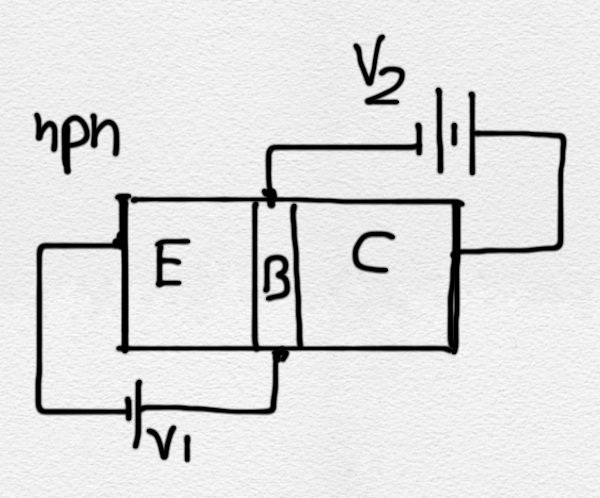The theory (that I know) goes like:
Two junctions, EBJ and CBJ, EBJ is put in forward bias and CBJ is put in reverse bias to operate the BJT in forward active operation Region.

Now Electrons are injected at Emitter by battery V1, nice, let's say 100 electrons went out of V1.
Now since base is seriously thin, and there is strong electric field of CB junction, we can safely say that only 10 electrons were able to reach the base terminal and finally back to battery V1.

The other 90 electrons were collected by V2 who didn't even give any electrons.
From what I know of batteries, I think that if I take 100 electrons out of -Ve terminal then I also got to give it back 100 electrons at +Ve terminal. Isn't that so?
My question is Where am I going wrong? How can V1 keep losing electrons and V2 keep pirating V1's electrons and the system still works?

